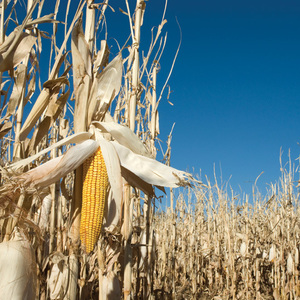WASDE maintains forecast for corn use in ethanol

July 12, 2021
BY Erin Krueger
The USDA maintained its forecast for 2021-’22 corn use in ethanol in its latest World Agricultural Supply and Demand Estimates report, released July 12. The forecast for the season-average corn price was lowered.
When compared to last month, the July WASDE’s corn outlook is for larger supplies, greater feed and residual use, increased exports, and higher ending stocks.
Corn beginning stocks are lowered 25 million bushels to 1.082 billion bushels based on greater feed and residual use for 2020-’21 as indicated in the June 30 Grain Stocks report.
Advertisement
Advertisement
Corn production for 2021-’22 is forecast 175 million bushels higher, at 15.165 billion bushels, based on greater planted and harvested areas. The national average corn yield is unchanged at 179.5 bushels per acre.
According to the USA, total corn used for 2021-’22 is forecast 75 million bushels higher with increases for feed and residual use and exports. Feed and residual use is raised reflecting a larger crop.
Approximately 5.2 billion bushels of corn is expected to go to ethanol production in 2021-’22, a forecast maintained from the June WASDE. According to the USDA, 5.05 billion bushels of corn went to ethanol production in 2020-’21, up from 4.857 billion bushels in 2019-’20.
Advertisement
Advertisement
Corn exports are raised 50 million bushels, with sharply lower expected for Brazil. With supply raising more than use, ending stocks are up 75 million bushels.
The season-average farm price received by producers is lowered 10 cents to $5.60 per bushel.
Foreign corn production is forecast higher, with a projected increase for Russia based on higher indicated area. For 2020-’21, corn exports are raised for Argentina but lowered for Brazil for the local marketing year beginning March 2021. Foreign corn ending stocks for 2021-’22 are virtually unchanged from the June WASDE.
Related Stories
The U.S. EPA on July 8 hosted virtual public hearing to gather input on the agency’s recently released proposed rule to set 2026 and 2027 RFS RVOs. Members of the biofuel industry were among those to offer testimony during the event.
The USDA’s Risk Management Agency is implementing multiple changes to the Camelina pilot insurance program for the 2026 and succeeding crop years. The changes will expand coverage options and provide greater flexibility for producers.
The USDA’s National Agricultural Statistics Service on June 30 released its annual Acreage report, estimating that 83.4 million acres of soybeans have been planted in the U.S. this year, down 4% when compared to 2024.
SAF Magazine and the Commercial Aviation Alternative Fuels Initiative announced the preliminary agenda for the North American SAF Conference and Expo, being held Sept. 22-24 at the Minneapolis Convention Center in Minneapolis, Minnesota.
Scientists at ORNL have developed a first-ever method of detecting ribonucleic acid, or RNA, inside plant cells using a technique that results in a visible fluorescent signal. The technology could help develop hardier bioenergy and food crops.
Upcoming Events










